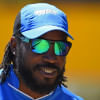A closer look at the Modi-Yunus meeting

Why so many issues in just 40 minutes? Did they truly listen to each other—or merely exchange a list of disputes? Surely both sides came having done their homework. Or perhaps Dhaka and Delhi arrived armed with their own agendas, with little intention to prioritise. When the relationship is fragile and a rare opportunity emerges, wouldn't warmth and confidence-building have made more sense?
It's clear Dhaka was eager to set up this meeting between Prime Minister Modi and Chief Adviser Yunus. Delhi, on the other hand, appeared to have kept it pending until the last minute. Interestingly, just a week earlier, the CA had engaged with Chinese leaders. Was this a message to Delhi: "If you don't talk, we'll take the match to a third party's playground?"
Japan's infrastructure push, connecting Bangladesh to India's Seven Sisters, is a decade-old trilateral effort between Tokyo, Dhaka, and Delhi. It's a win-win measure—and it speaks volumes: trust us. Japan—more so than many—has stood by us consistently. Yunus's subtle reference to this alignment while speaking with China may well have applied quiet pressure on Delhi.
When Delhi didn't confirm the next-day sideline meeting, the CA's press team publicised several photos of Modi and Yunus sitting side by side at the BIMSTEC dinner. Alongside this, continued social media releases featuring high-level interactions with Indian representatives helped build anticipation. It created a buzz—a sense of proximity between the two leaders. And it's true: if not the entire region, at least Bangladesh was closely observing the body language and attitude of the two men.
In fact, the public perhaps longed to see that closeness—what we might describe as a moment of emotional diplomacy or a symbolic chemistry.
Modi, as quoted in Indian media, advised Yunus that "rhetoric that vitiates the environment is best avoided." A line not casually dropped—unless the tone was already set.
In a region already teeming with distrust, misinformation, and emotional narratives, what was truly achieved in this so-called "sideline" meeting?
Read Modi's post again on X:
"Met with Mr Muhammad Yunus, Chief Adviser of the interim government of Bangladesh.
India remains committed to a constructive and people-centric relationship with Bangladesh.
I reiterated India's support for peace, stability, inclusivity, and democracy in Bangladesh."
While the CA's press wing followed up with detailed statements, India left post-meeting messaging to its seasoned diplomats—a clear signal that Delhi preferred containment over escalation. Yet, the way the CA's team framed the meeting, it was not just a diplomatic exchange—it was a performance for a broader audience. A message that said: We said everything that needed to be said—openly and directly. It was diplomacy shaped by political communication.
Another layer: PM Modi was accompanied by India's National Security Adviser Ajit Doval, who also held a quiet sideline meeting with the High Representative of the CA. The details of that interaction haven't been made public, but its significance hasn't gone unnoticed.
Meanwhile, the CA expressed gratitude for India's historic role in Bangladesh's 1971 Liberation War, stressed the importance of sustaining the bilateral relationship, and sought Delhi's support for Bangladesh's leadership of BIMSTEC. Modi responded warmly, extending Eid greetings and acknowledging Dhaka's growing regional responsibilities.
Still, both sides' messaging leaves a curious gap. Yunus raised concerns about border killings, cited the UN Human Rights Council's findings on abuses under Sheikh Hasina's final weeks, and pressed for her extradition, accusing her of inciting unrest from Indian soil—a misuse, he said, of Delhi's hospitality. Reports confirm that eight major issues were packed into the short session—from the Teesta water treaty and BIMSTEC cooperation to security tensions and the Hasina question. A lot of weight for 40 minutes.
Modi's public statement avoided all of that. Still, officials indicated that India countered on the border narrative, labelling the actions of Indian forces as self-defence. On the matter of minorities in Bangladesh, Modi reportedly raised concerns—to which the CA responded that many such incidents were exaggerated and "mostly fake news." So, was this meeting truly "candid, constructive, and productive"—as the press wing of CA claimed—or just a polite exchange of long-standing grievances with no resolution in sight?
If Modi's advice is overlooked, and Yunus's concerns were left without concrete response, was this really a dialogue—or two parallel monologues? In a region shaped by complex histories, the brief Yunus–Modi meeting was a chance to set a more hopeful tone. While many issues surfaced, the deeper need was trust. India seems to be misreading the pulse of ordinary Bangladeshis — who seek dignity, fairness, and respect. For both Dhaka and Delhi, the way forward lies not just in strategy, but in sincerity — and gestures that build lasting understanding.
Nazbul H Khan is an independent analyst and op-ed contributor on South Asian geopolitics. He is also co-founder of the platform PART II.
Views expressed in this article are the author's own.
Follow The Daily Star Opinion on Facebook for the latest opinions, commentaries and analyses by experts and professionals. To contribute your article or letter to The Daily Star Opinion, see our guidelines for submission.

 For all latest news, follow The Daily Star's Google News channel.
For all latest news, follow The Daily Star's Google News channel. 










Comments